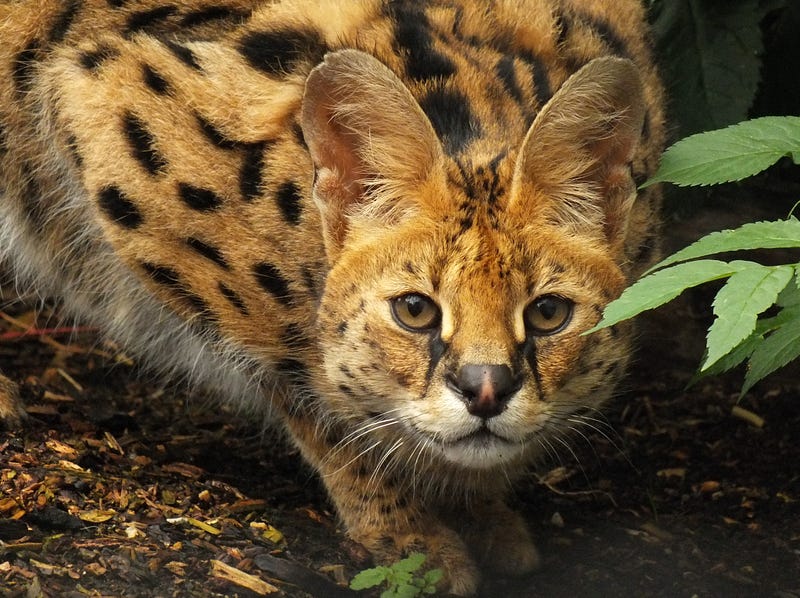
Many animals, in fact the vast majority, are not overly specialized in their diet. They exhibit polyphagy, or the consumption of multiple different types of foods. Because of this, some need to develop special behaviors for acquiring certain portions of their food supply. One example of this is a pair of closely related medium-sized cats native to Africa and parts of the Middle East. The animal above is called a caracal, Caracal caracal.
It and its relative pictured below, the serval, Leptailurus serval, are similar in many ways, including size and behavior. Both reach between 40 and 60 cm in height at the shoulder (with the serval being slightly taller) and weigh between just under 10 and just under 20 kg. They both prefer environments with at least light cover.

Both cats are primarily solitary species and can be active at night, though the caracal is much more nocturnal than the serval. There is a large overlap of their potential habitat ranges, although the caracal is more comfortable in arid regions than the serval (though usually not in a full desert environment such as the Sahara). Their primary prey are small mammals, especially rodents such as the vlei rat, Myotomys unisulcatus. Diet studies indicate that such prey items make up 80% or more of the food sources for the average serval or caracal, and in some individuals as high as 97%. The two species stalk their prey in a manner similar to other cat species. Once in close, they incapacitate the prey with a strike from the forepaw and kill with a bite to the back of the neck.
However, both species are also avivores (from the Latin for bird). This, of course, presents a bit of a challenge. How, exactly can these cats go after animals that can fly? Even a small bird would be a challenge. While the two species can potentially stalk birds on the ground, both are well known for being able to go after birds on the wing and knock them out of the sky. They accomplish this with an immense vertical leap of 2 to 3 meters in height. That is between two and four times their body length (each is under a meter long, which does not include the tail, as those are usually not included in length measurements of any species). Check out the video below to see how all of their hunting adaptations come together at the moment that a bird takes flight in an attempt to escape.
Serval vs. Guinea Fowl by Smithsonian, YouTube
The reason why there are many diet generalists throughout nature is because flexibility and extra options can allow for increased survival. If your main food source is unavailable, you have a backup. However, this also means that you need to formulate behaviors and functional structures to be able to take advantage of those options. The caracal and the serval have done so, and managed to partially neutralize one of the greatest defensive mechanisms against a ground-based attack: flight. If you’re a mammal and you want to include birds in your diet, you need to be able to do that (or be able to go after flightless birds, which is not nearly as interesting).
I hope you are continuing to enjoy some of the more interesting diets and feeding methods I have introduced to you so far this season. As always, please let me know what you like about my stories, what you think can be improved upon, and what sorts of topics you’d like to see covered in the future.